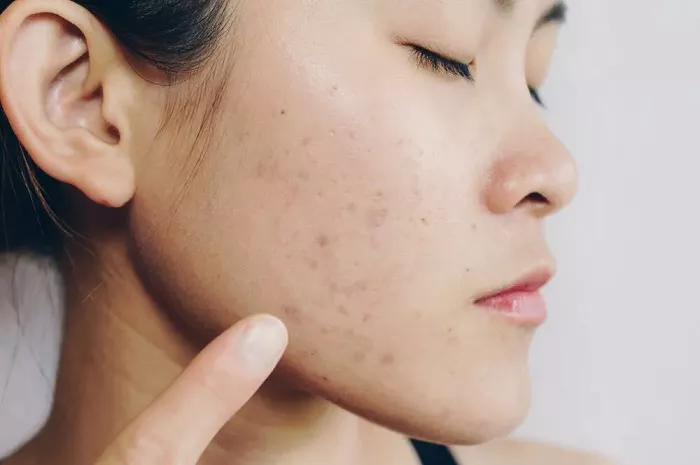Liposuction, a widely sought-after cosmetic procedure, has transformed the landscape of body contouring. While it offers remarkable results in reducing excess fat, the question often arises: can liposuction scars be removed? This article delves into the intricacies of liposuction scars, exploring the nature of these scars, factors influencing their appearance, and the diverse options available for minimizing or removing them. Understanding the dynamics of liposuction scars empowers individuals with the knowledge to make informed decisions about their aesthetic journey.
The Nature of Liposuction Scars
Liposuction scars result from the incisions made during the procedure to insert cannulas and remove excess fat. These incisions are intentionally small, typically ranging from a few millimeters to a centimeter in length. The size and placement of liposuction scars often depend on factors such as the technique used, the specific areas treated, and individual variations in skin elasticity. While the intent is to keep scars inconspicuous, their appearance is influenced by several factors, including genetics, skin type, and post-operative care.
Immediate Aftermath
In the immediate aftermath of liposuction, the incision sites undergo a healing process that involves inflammation, tissue repair, and scar formation. During this early stage, liposuction scars may appear red, raised, or slightly bruised. The body initiates the production of collagen to repair the incisions, and the appearance of scars can evolve over time. Understanding the dynamic nature of scar formation in the early stages sets the stage for exploring options to minimize or remove liposuction scars effectively.
Factors Influencing Liposuction Scar Appearance
Several factors contribute to the appearance of liposuction scars, extending beyond the surgical technique itself. Skin type plays a significant role, with individuals prone to keloid or hypertrophic scarring potentially experiencing more noticeable scars. The location of the liposuction treatment, the patient’s age, and overall skin health also influence scar appearance. Additionally, adherence to post-operative care instructions, such as keeping the incisions clean and avoiding excessive sun exposure, can impact the final outcome of liposuction scars.
Non-Surgical Approaches
For individuals seeking non-surgical options to address liposuction scars, topical treatments offer a viable avenue. Various creams, ointments, and gels containing ingredients such as silicone, vitamin E, and onion extract are commonly recommended to reduce the visibility of scars. These topical treatments aim to hydrate the skin, modulate collagen production, and promote a more favorable environment for scar healing. While results may vary, consistent and diligent application of these products can contribute to the improvement of liposuction scar appearance over time.
Laser Therapy
Laser therapy has emerged as a non-invasive approach to address scars, including those resulting from liposuction. Laser treatments utilize focused light energy to stimulate collagen production, soften scar tissue, and promote a more even skin texture. Fractional laser technology, in particular, allows for precise targeting of scarred areas without affecting the surrounding tissue. Laser therapy is often considered a safe and effective option for reducing the appearance of liposuction scars, with visible improvements observed after a series of treatments.
Microneedling
Microneedling, a minimally invasive procedure, involves the use of a device with tiny needles to create controlled micro-injuries in the skin. This process stimulates the production of collagen and elastin, promoting natural skin regeneration. In the context of liposuction scars, microneedling can be employed to improve the texture and appearance of scarred areas. The controlled injury triggers the body’s healing response, leading to a gradual reduction in the visibility of scars. Microneedling is often combined with topical treatments for enhanced results.
Injectable Treatments
Injectable treatments, such as dermal fillers and corticosteroids, offer alternative approaches to address the appearance of liposuction scars. Dermal fillers, typically composed of hyaluronic acid or other biocompatible materials, can be strategically injected to fill depressed or concave scars, creating a smoother skin surface. Corticosteroid injections, on the other hand, are utilized to reduce inflammation and flatten raised or hypertrophic scars. While injectable treatments provide temporary solutions, they can be effective in camouflaging and minimizing the visual impact of liposuction scars.
Scar Revision Surgery
In cases where non-surgical approaches yield limited results, scar revision surgery may be considered for individuals seeking more comprehensive and lasting improvements. Scar revision involves the excision of the existing scar tissue and the meticulous closure of the incision to promote optimal healing. This surgical option aims to refine the appearance of the scar, making it less noticeable and more in harmony with the surrounding skin. Scar revision surgery is a specialized field that requires the expertise of a skilled plastic surgeon to achieve optimal outcomes.
Combination Therapies
In many cases, a combination of therapies may offer the most effective approach to address liposuction scars. For example, a comprehensive treatment plan may involve a series of laser therapy sessions to improve scar texture, followed by microneedling to stimulate collagen production, and complemented by the use of topical treatments for ongoing scar care. The key is to tailor the approach based on the specific characteristics of the scars, the individual’s skin type, and their desired outcomes.
Preventing Scars
While addressing existing liposuction scars is a common concern, proactive measures during the post-operative period can contribute to minimizing the risk of noticeable scars. Adhering to aftercare instructions provided by the surgeon, including proper wound care, avoiding sun exposure, and refraining from activities that may strain the healing incisions, is crucial. Additionally, maintaining overall skin health through hydration and a balanced skincare routine can positively influence the healing process and contribute to less visible scarring.
Understanding Patient Perspectives on Liposuction Scars
Beyond the physical aspects, the psychological impact of liposuction scars cannot be overlooked. For many individuals, the decision to undergo liposuction is driven by a desire for enhanced body confidence and aesthetic satisfaction. Therefore, addressing concerns related to scars is integral to the overall satisfaction of patients. Plastic surgeons and healthcare providers play a pivotal role in managing patient expectations, providing realistic insights into the potential outcomes, and offering comprehensive support throughout the post-operative journey.
Conclusion
In conclusion, the landscape of liposuction scars is multifaceted, with various options available to address and minimize their appearance. From non-surgical approaches such as topical treatments, laser therapy, and microneedling to more invasive options like scar revision surgery, individuals have a range of choices to tailor their approach based on individual needs and preferences. The key lies in understanding the nature of liposuction scars, exploring diverse treatment modalities, and collaborating with experienced healthcare professionals to navigate the journey towards scar reduction and enhanced aesthetic outcomes. Armed with knowledge and options, individuals can embark on their post-liposuction recovery with confidence, knowing that solutions exist to unlock the possibilities of scar improvement.
[inline_related_posts title=”You Might Be Interested In” title_align=”left” style=”list” number=”6″ align=”none” ids=”3508,3436,3398″ by=”categories” orderby=”rand” order=”DESC” hide_thumb=”no” thumb_right=”no” views=”no” date=”yes” grid_columns=”2″ post_type=”” tax=””]
































